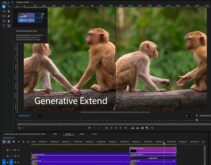After speaking with Chang, I was eager to try his idea of using one key light behind the camera because this would save transporting another light on portable shoots and would guarantee absolute even lighting across the face. Rather than using the ad hoc lighting I’ve assembled over the years, we asked Lowel to supply one of its more popular lighting kits, the DV Creator 44, for our use. While hard tungsten lights power the kit, it includes a Rifa-44 soft box, an umbrella, and various gels and diffusion materials to soften the otherwise hard lights.
The first shoot was the physician’s pre- and post-procedure advice. Because this was an informational-type video, flat lighting was most appropriate. The goals of this shoot were to determine if a two-light setup could match the look and feel of the three-point setup and identify any implementation issues. Obviously, this required two setups — one with dual key lights, the other with the single key light in the back.
The Creator 44 kit includes four different lights. In my initial dual-key setup, I used the Omni-light and Rifa-lite as my two keys. I used a 500W bulb in the Omni-light, faced it away from the subject, and attached the umbrella to shine the soft light back at the physician. On the other side, I used the Rifa-lite soft box with a 250W lamp positioned much closer to the subject. Both of the other lights (Tota-light and Pro-light) were too powerful to serve as backlight in the confined space of the physician’s office, so I used a clamp light with a bulb that matched the 3200-degree-K color temperature of the Lowel lights.

Figure 2. One of the key lights and the back light in the dual key setup.
In the second setup, I used the Omni-light and umbrella directly behind the camera, positioned at a 25-degree angle above the physician.

Figure 3. The single key setup.
The results are shown in Figure 4, with the dual-key setting on the left and single key on the right.
Figure 4: Flat lighting is used to minimize or eliminate shadows, even when the subject moves around. Left, flat lighting produced by a dual-key setup; right, a single-key setup. Click the figure to view the image at full resolution in a separate window.
You can see that the dual-key setup yielded slightly better light to the sides of the face, and slightly less shadow under the chin, but no significant difference in modeling. Looking at the images side by side, I wish I had gone down one more f/stop on the single-key shoot to brighten the image. However, the dual-key setup wasn’t perfect either, considering the slight nose caret on the left. Otherwise, if you didn’t know what you were looking at, you probably wouldn’t know which lighting setup is which.
During the shoot, the physician said the single key was a bit harder on the eyes, but not that big a deal as long as he looked into the camera. You can see the glare on the magazines over his right shoulder, which definitely would trigger a backlighting condition if I were shooting in automatic mode. The single-key approach is definitely a non-starter if your subject wears glasses because the reflection on the glasses would be pronounced.
On the other hand, the single-key shot is shadow-free, eliminating shadows seen in the dual-key approach on the bookshelf and the small shadows from his collar. While shadows weren’t a problem in this shoot, the single-key approach would be much simpler in situations in which shadows are an issue — particularly when shooting for greenscreen in close quarters.
Here’s a video on setting up flat lighting.
 Streaming Learning Center Where Streaming Professionals Learn to Excel
Streaming Learning Center Where Streaming Professionals Learn to Excel









